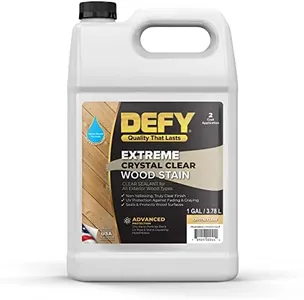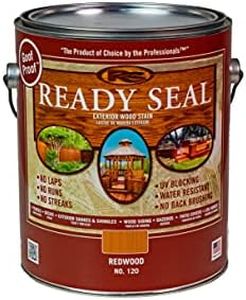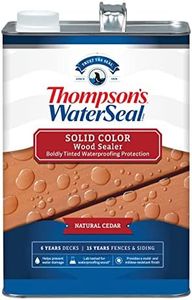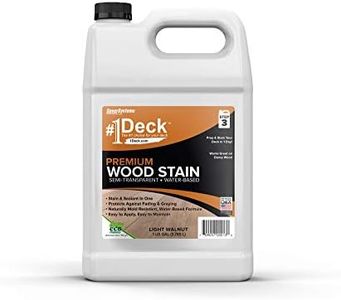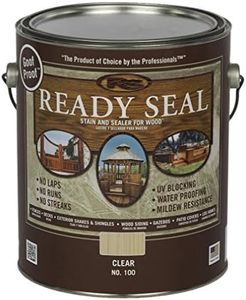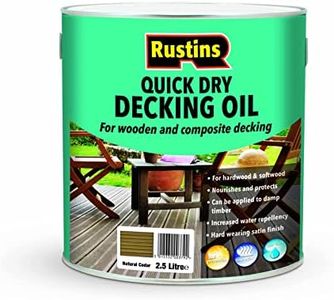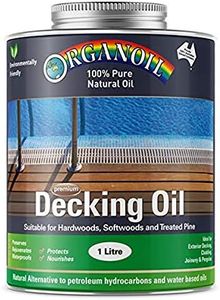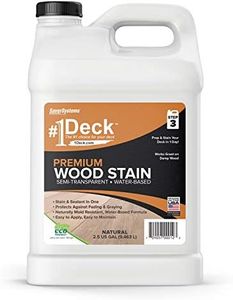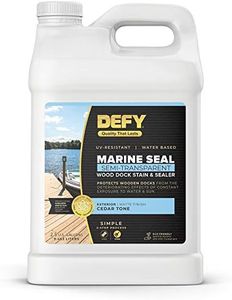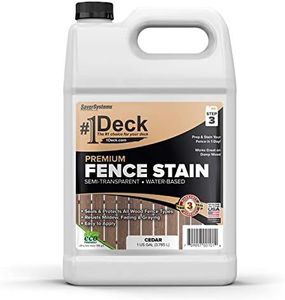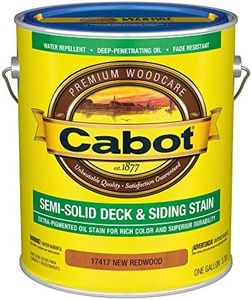We Use CookiesWe use cookies to enhance the security, performance,
functionality and for analytical and promotional activities. By continuing to browse this site you
are agreeing to our privacy policy
10 Best Cedar Deck Sealers
From leading brands and best sellers available on the web.Buying Guide for the Best Cedar Deck Sealers
When choosing a cedar deck sealer, your goal is to protect your beautiful cedar deck from the elements, such as rain, sun, and temperature changes, which can damage the wood over time. The right sealer will preserve the natural look, enhance the aesthetic, and extend the longevity of your deck. As you shop around, it's important to understand what features matter and how to match the sealer to your specific needs, such as how often you want to reapply, the look you are going for, and the level of maintenance you are willing to handle.Type of SealerThe type of sealer defines how the product protects your wood. There are generally three types: clear sealers, semi-transparent stains, and solid stains. Clear sealers preserve the natural look of cedar but provide the least UV protection. Semi-transparent stains add some color while allowing wood grain to show, providing a balance between aesthetics and protection. Solid stains give a more painted look, covering most of the grain but offering the highest protection from sun and weather. Your choice should depend on whether you prioritize showcasing the wood’s natural appearance or maximizing durability.
UV ProtectionUV protection refers to how well the sealer shields your deck from sun damage, which can cause fading, graying, and weakening of the wood. Products typically indicate the level of UV resistance. If your deck is exposed to a lot of sunlight, you'll want a sealer with strong UV blockers; these are often found in semi-transparent or solid stains. If your deck is shaded, UV protection is less critical but still beneficial for long-lasting beauty.
Water ResistanceWater resistance is the sealer’s ability to repel water and prevent moisture from entering the wood, which helps to avoid rot, warping, and cracking. Sealers range from basic water repellency to advanced waterproofing formulations. If your area sees a lot of rain or humidity, prioritize a product known for superior water resistance to keep your cedar healthy and strong.
Ease of ApplicationEase of application means how simple it is to apply the sealer and achieve consistent coverage. Some sealers require only a single coat and can be brushed, rolled, or sprayed on, which can save time and effort. Others might need multiple coats or specific weather conditions to cure properly. If you prefer straightforward maintenance, look for a sealer that’s user-friendly and suitable for DIY application.
Drying/Curing TimeDrying or curing time refers to how long it takes for the sealer to set after application. Fast-drying options let you use your deck sooner, which is helpful if you have a busy household or unpredictable weather. However, some longer-curing sealers offer deeper protection and may be worth the wait if you can plan around the downtime. Consider your timetable and weather when choosing.
Finish AppearanceThe finish appearance is about the final look of your deck after the sealer is applied, ranging from natural matte to glossy shine. Some people prefer a ‘wet look’ that deepens the wood color, while others like a subtle matte finish. Think about your style preferences and how they fit with the look of your home and outdoor space when deciding on this feature.
Longevity/Duration of ProtectionLongevity describes how long the sealer will protect your deck before needing reapplication. Some sealers may last only a season, while others can provide protection for several years. Generally, solid stains offer the longest lifespan; clear finishes often need to be reapplied more frequently. If you want less maintenance, choose a product that promises multi-year protection.
